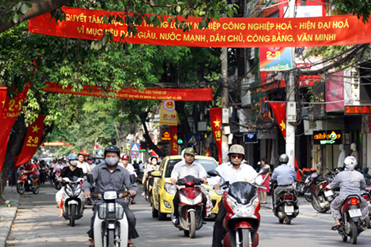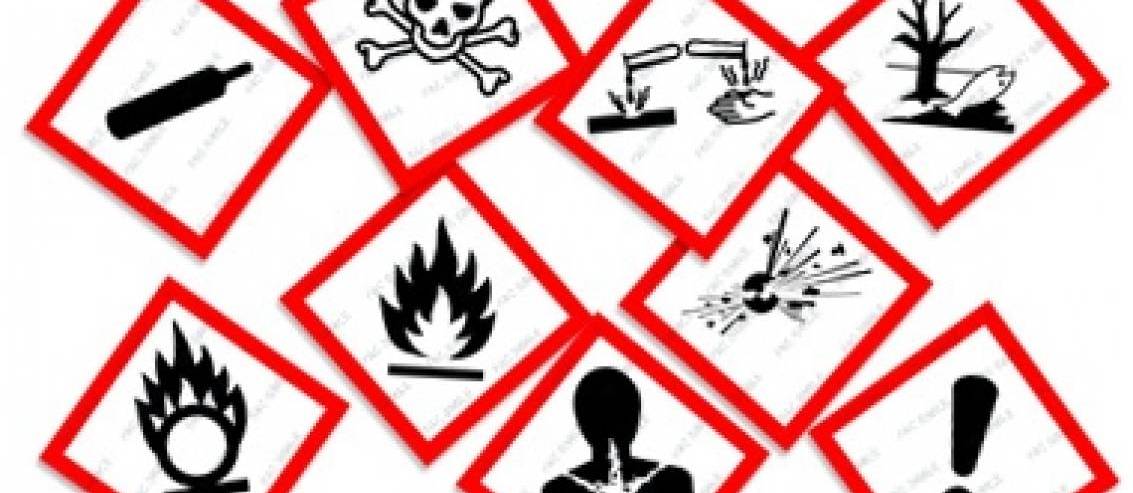Labor laws are enacted and applied in practice with the primary aim of protecting the legitimate rights and interests of employees. Particularly, in the current context, female workers constitute a significant portion of the workforce in our country. The State also stipulates certain policies to ensure the health and rights of female employees participating in the labor force.
Article 160 of the Labor Code 2012 stipulates 3 positions prohibited from employing female employees in Vietnam, including:
- Jobs that negatively affect reproductive and child-rearing functions according to the list issued by the Ministry of Labor – Invalids and Social Affairs in cooperation with the Ministry of Health.
- Jobs requiring frequent immersion in water.
- Jobs conducted regularly in mines.
The group of jobs not utilizing female labor is specified in 77 jobs listed in Circular 26/2013/TT-BLDTBXH as follows:
| No. | JOBS NOT UTILIZING FEMALE LABOR |
|---|---|
| APPLICABLE TO ALL FEMALE LABOR | |
| Jobs that negatively affect reproductive and child-rearing functions | |
| 1 | Directly melting and pouring molten metal in furnaces such as: Electric arc furnaces of 0.5 tons or more; Foundry furnaces (iron smelting); Open furnaces (steel smelting); Blast furnaces |
| 2 | Rolling hot metal (excluding non-ferrous metals) |
| 3 | Directly refining non-ferrous metal ores (copper, lead, tin, mercury, zinc, silver) |
| 4 | Coke oven operations |
| 5 | Welding in closed containers, welding at a height of over 10m from the working floor |
| 6 | Exploration drilling, blasting, and detonating |
| 7 | Rock leaning on mountains |
| 8 | Offshore drilling rig installation |
| 9 | Exploration drilling for oil and gas wells |
| 10 | Regular shift work on offshore rigs (excluding medical-social services, accommodation services) |
| 11 | Maintenance, repair of electric lines in underground conduits or on outdoor poles, high-voltage electric lines, high-voltage pole installation |
| 12 | Maintenance, installation, repair of poles across rivers, antenna poles |
| 13 | Working in submerged tanks |
| 14 | Direct adjustment in the construction of large slabs or structures by manual methods |
| 15 | Direct well digging, well finish construction by manual methods |
| 16 | Directly uprooting large trees, felling large trees, transporting, hauling, loading, and unloading large timber, manual sawing of large wood with a diameter over 40 cm by manual methods; pruning branches at a height over 5m by manual methods |
| 17 | Utilizing types of hand tools powered by compressed air with a pressure of 4 atmospheres or more (such as drills, hammers) |
| 18 | Operating heavy construction machinery with a capacity of over 36 horsepower such as excavators, bulldozers, tracked vehicles (excluding machines with hydraulic support) |
| 19 | Painting, repairing, constructing, plastering, cleaning, decorating on the exterior surfaces of high-rise buildings (from the 3rd floor or higher or at a height over 12m from the working floor) without machines, lifts, or sturdy scaffolding |
| 20 | Salvaging submerged wood, dragging wood in the bay, raising wood ashore |
| 21 | Rafting on rivers with many rapids |
| 22 | Harvesting bird nests (excluding harvesting from raised birdhouses); collecting bat dung |
| 23 | Jobs on seafaring vessels (excluding restaurant, room, table, reception services on tourist vessels) |
| 24 | Guarding ships, watching ships in the dry dock |
| 25 | Operating boilers (excluding automatic operations, operating boilers using oil and electricity as the energy source) |
| 26 | Driving trains (excluding trains with highly automated operations, intra-urban or tourist trains) |
| 27 | Jobs in shipbuilding (wooden, iron ships) requiring heavy lifting, handling of processed materials over 30 kg |
| 28 | Surveying river routes in areas with high rapids, deep and dangerous mountains |
| 29 | Operating dredging vessels; lifting cranes |
| 30 | Driving trucks with payloads over 2.5 tons (excluding trucks under 10 tons with power assist systems) |
| 31 | Jobs requiring lifting over 50kg |
| 32 | Operating tanks, dyeing machines of all kinds, centrifugal drying machines, calendering machines (excluding machines with automated operations) |
| 33 | Rolling large, hard leather sheets (excluding machines with automated operations) |
| 34 | Driving agricultural tractors with a capacity of 50 horsepower or more |
| 35 | Performing autopsies, embalming, burying the dead (excluding cremation), exhuming graves |
| Jobs requiring frequent immersion in water and regularly conducted in mines | |
| 36 | Underwater concreting; divers |
| 37 | Cleaning underground sewers (excluding automatic, machine cleaning); jobs requiring frequent immersion in dirty, stinking water (from 04 hours in one day or more, over 3 days in 1 week) |
| 38 | Tunneling; sinking shafts; jobs in mines (excluding medical-social services and incidental jobs as required by management, but must comply with current national technical standards on safety and health standards for employees in mines) |
| APPLICABLE TO PREGNANT WOMEN OR WOMEN RAISING CHILDREN UNDER 12 MONTHS OLD | |
| 39 | Jobs in environments contaminated by electromagnetic fields exceeding regulatory standards (such as work in radio frequency transmission stations, broadcasting stations, television stations, and satellite telecommunications stations) |
| 40 | Direct contact with sealed and open radioactive sources; working and direct contact with radioactive substances in nuclear facilities; radioactive ore processing facilities; facilities for processing and managing radioactive waste and used radioactive sources; ore mining facilities with intermediate products or radioactive waste exceeding exemption levels; direct contact with radiopharmaceuticals in nuclear medicine departments or medical facilities using radiopharmaceuticals for treatment and diagnosis |
| 41 | Direct contact (including production, transportation, storage, use) with pesticides, herbicides, termite killers, rodenticides, mosquito repellents containing organochlorines and certain chemicals capable of causing genetic mutations and cancer |
| 42 | Direct contact with chemicals adversely affecting fetuses and breast milk |
| 43 | Jobs involving contact with organic solvents such as sleeper impregnation, paper emulsion spreading, flower printing on thin films, label printing on gloss paper, phenolic resin lamination, operation of multi-condensate phenolic resin boilers |
| 44 | Jobs in rubber production: raw material processing, weighing, sieving chemicals working in rubber smokehouses |
| 45 | Repairing furnaces, tanks, steel pipe systems in chemical production |
| 46 | Working in tobacco, pipe tobacco fermentation furnaces, cigarette drying furnaces |
| 47 | Operating gas kilns for glass melting, glass blowing by mouth |
| 48 | Leather tanning, salting, unloading raw hides |
| 49 | Paraffin coating in wine tanks |
| 50 | Painting, welding, rust scraping in beer vats, in closed tanks |
| 51 | Canning milk in enclosed rooms |
| 52 | Breaking casting molds |
| 53 | Processing feathers in open air conditions |
| 54 | Boiler, gas pipe cleaning |
| 55 | Grinding, ore processing or jobs in dusty conditions containing 10% or more silicon dioxide |
| 56 | Lead mineral enrichment; product rolling, drawing, stamping, lead plating |
| 57 | Operating filter presses in factories |
| 58 | Operating generators of 10KVA or more |
| 59 | Operating spooling, wire drawing machines |
| 60 | Driving agricultural tractors (regardless of capacity) |
| 61 | Operating construction machinery (regardless of capacity) |
| 62 | Driving trucks with a payload under 2.5 tons (excluding trucks with power assist); driving electric vehicles, transport vehicles in facilities; operating overhead cranes in facilities |
| 63 | Vulcanizing, molding, loading and unloading large rubber products, including tanks, fuel tanks, truck tires |
| 64 | Lifting heavy objects over 20 kg |
| 65 | Direct participation in investigation, verification, handling of outbreaks in suspected or confirmed areas of disease occurrence |
| 66 | Scooping, drying, transporting decayed fish or working in animal feed fish powder production line |
| 67 | Stirring, scooping pond sludge for fish farming |
| 68 | Direct contact with dye chemicals in dye plants such as: Chemical storekeepers, assistant storekeepers; dye chemical preparation |
| 69 | Semi-automatic 4-nozzle cement bagging |
| 70 | Installing, repairing VSAT stations (small antenna ground stations) in remote, mountainous, border, and island areas |
| 71 | Jobs requiring immersion in polluted water, prone to infection |
| 72 | Working in oxygen-deficient environments; in workshops with air temperatures from 40°C and above in summer and from 32°C and above in winter |
| 73 | Working in high vibration environments exceeding national regulatory standards; using machines, equipment with whole-body and localized vibration exceeding national regulatory standards |
| 74 | Jobs with constrained working positions, in confined spaces sometimes requiring lying, bending, stooping |
| 75 | Handling, operating pumps and measuring gasoline, oil in caves; handling gasoline, oil on the sea |
| 76 | Operating equipment for cooking, casting lead plates in battery production |
| 77 | Operating equipment for the production and packaging of yellow phosphorus |
However, Circular 26/2013/TT-BLDTBXH has caused many inconsistencies and concerns regarding its practical application. Many argue that female employees are not weak when participating in social labor. There are many jobs "prohibited" for female employees, but they are actually better and more suitable than male employees. Some jobs listed are easy sources of income for many female employees. Additionally, while gender equality exists in the labor market, such "selective" regulations raise the question of whether female employees are being "deprived" of their right to freely choose their jobs.
 Article table of contents
Article table of contents










.Medium.png)
.Medium.png)
.Medium.png)
.Medium.png)
